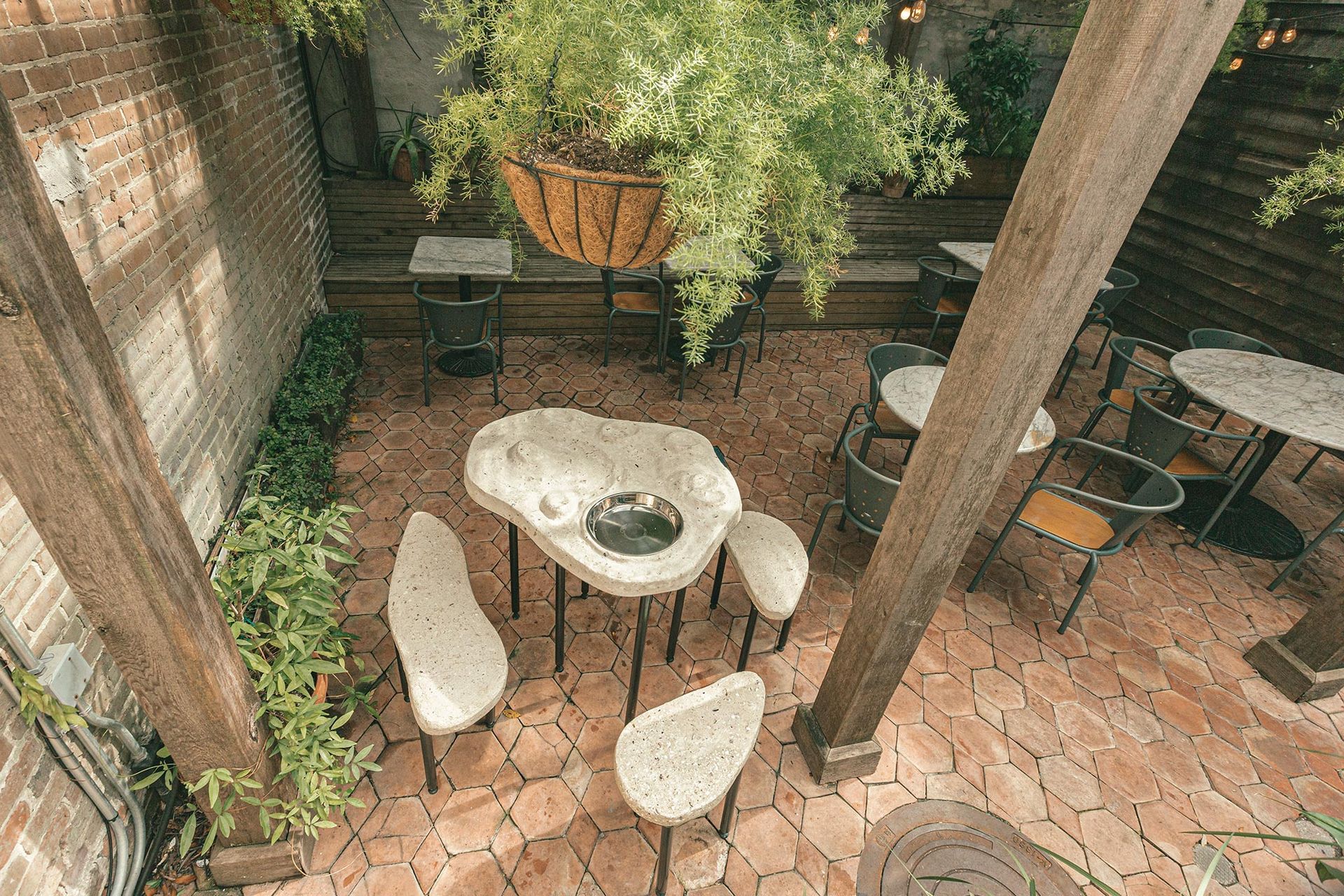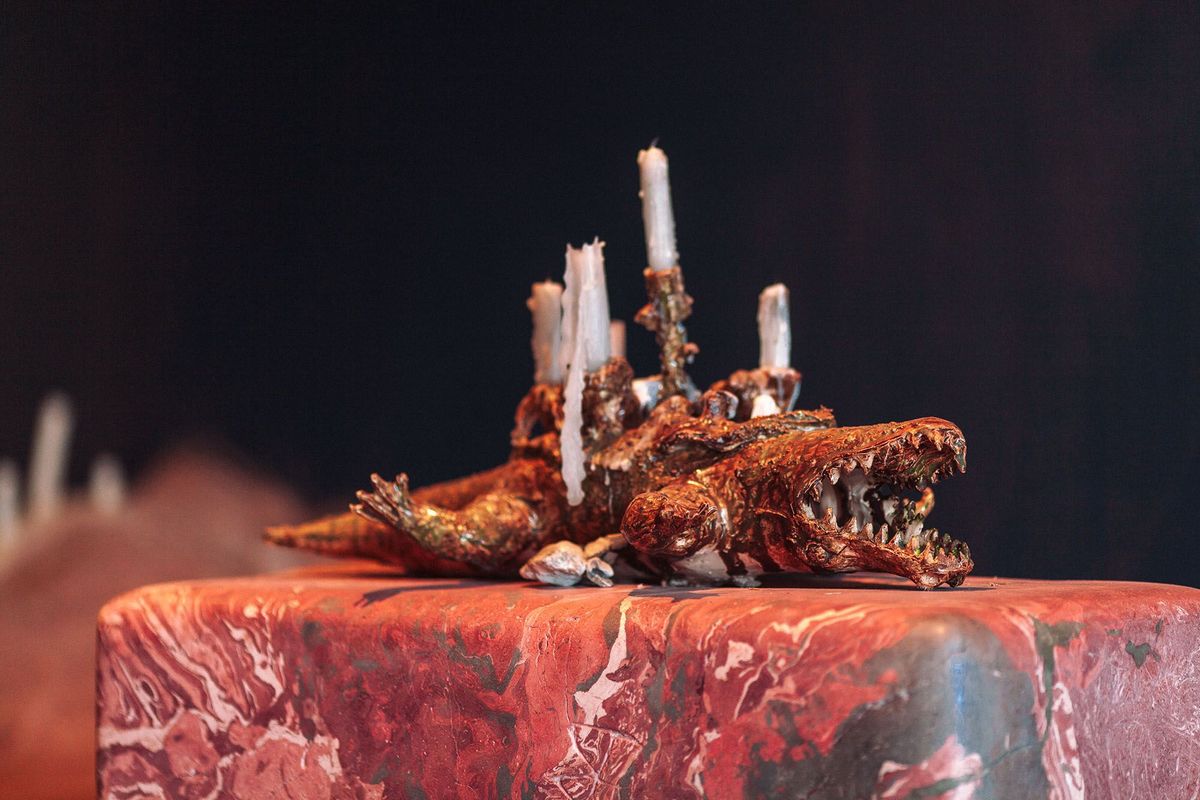While the ever-changing circumstances brought many challenges, the fifth edition of the Prospect New Orleans triennial opened across New Orleans in October. Originally scheduled to open in autumn 2020, the pandemic delayed our opening by a year, which was then further postponed by the devastating impact of Hurricane Ida. Although deferrals of every kind occurred, including public, personal, logistical and environmental, we are grateful to have had the continued support and collaboration of our community of artists, art workers, framers, installers, as well as so many others throughout the country who helped both realise this exhibition—Prospect.5: Yesterday We Said Tomorrow—and inspire it.
Many are now just beginning to understand the environmental precarity that New Orleans has long been intimately familiar with. Frequent flooding, rising sea levels, hurricanes and the myriad impacts of environmental racism are continuously compounded while calls across the globe from climate activists and land stewards are ignored. Both current and future generations will experience a record number of natural disasters, a quickening decline into a series of unpredictable weather patterns and increasingly frequent epidemics. Accountability and action on this front must not be deferred, although they have been for far too long.
Even before the pandemic and Hurricane Ida delayed the exhibition, the environment and our relationship with it were key components of our curatorial engagement with New Orleans in our roles as co-artistic directors of Prospect.5. Artists such as Dineo Seshee Bopape, Cooking Sections, Candice Lin and Sky Hopinka, among others, have put forth rich artistic offerings that invite reflection on the landscape and environment not only in a theoretical sense, but through both the aesthetic and material aspects of their works. These artists engage with the material reality of various landscapes and lands. Lin and Bopape both drew clay from Louisiana bayous and rivers to reflect on the violence that has historically been transmitted through waterways, while Cooking Sections looks to locally sourced oysters to explore the impact of climate change on aquatic ecosystems. As curators from outside of New Orleans, we felt it was deeply important to the process to display site-responsive and immersive works that are not only sited upon the land, but that actively engage with it.

Cooking Sections, Oyster Readings (2021), installation view for Prospect.5: Yesterday We Said Tomorrow at Seaworthy, New Orleans Courtesy Prospect New Orleans. Photo: Jose Cotto
We also felt strongly about centring tradition in the exhibition framework, and there are several artists approaching the landscape through various media and sites. Just as we observe and experience natural disasters operating in cycles, part of our consideration of the landscape of New Orleans was also tied to the ritual and spiritual cycles that are deeply tethered to the land. This rich history of intergenerational knowledge is shaped by the environmental and human cycles of the city, from festivities to mourning rituals. Celebration and remembrance are intertwined.
Prospect New Orleans as a model is uniquely positioned in this era of environmental crisis and inaction, as it emerged in the wake of Hurricane Katrina. It was directly mobilised by both the original natural disaster that displaced and impacted so many, as well as the aftershocks of the event, which continue to reverberate throughout the city. We believe the framework of the triennial itself as a temporary, site-specific exhibition comes with great responsibility and necessitates care. The significance of geography must be a central element of these conversations, with an eye toward responsiveness and nimbleness when considering the needs of place—both the land and the people who inhabit it.
After Hurricane Ida, we focused on devoting energy first toward the New Orleans community. Many Prospect.5 projects were affected in some way by these environmental interventions. Take Adriana Corral, who shifted her project, choosing to direct her artistic budget toward mutual aid funds. As we moved through this chapter, these intuitive shifts were the only way forward.
What might it look like if site-responsiveness was more fully embraced, and we moved towards a model of biennials and triennials that are accountable to the locales and environments they embed themselves in for a limited period of time? We would like to keep imagining what this might look like, in New Orleans and beyond, as we continue to think about the precarity of our shared environments.
- Naima J. Keith and Diana Nawi are the co-curators of the fifth edition of the Prospect New Orleans triennial. Nawi is an independent curator based in Los Angeles. Keith is the vice president of education and public programmes at Los Angeles County Museum of Art (Lacma)
- The fifth edition of the Prospect triennial, Yesterday We Said Tomorrow, continues at venues throughout New Orleans, Louisiana, until 23 January


